Attention Dry Dredgers
and other collectors
of the Cincinnatian Series Kope Formations!!!!
Be on the lookout for this fossil!
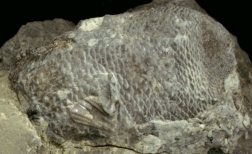
Specimen#: O72k6001
SPECIAL NOTE: THIS IS NOT THE SAME AS RON FINE'S NEW MYSTERY FOSSIL CODE
NAMED "GODZILLUS". (SEE
HTTP://DRYDREDGERS.ORG/GODZILLUS).
I have recently found a new kind of Algae fossil in the Southgate
member of the Kope Formation (Edenian Stage). This strange fossil, pictured
below, looks similar to an Echinoderm because it is covered with plates, called meroms. These plates are arranged in a shingled pattern that resembles the seed
head of a sunflower at both ends.
This fossil is extremely abundant in a thin layer only a few centimeters thick.
But the fossil has only been found on one site in recent years, in Northern
Kentucky near Cincinnati.
The layer found to contain these specimens is near the top of the Snag Creek submember or the bottom of the Alexandria submember of the Southgate member, as
described in the Field Trip Guidebook ("Sequence, Cycle & Event
Stratigraphy of the Upper Ordovician of the Cincinnati Arch Region") by
Algeo and Brett, 1999. The layer can easily be identified. It is loaded with
Graptolites and Mollusks. The Mollusks include snails, clams and Cephalopods.
The Graptolites are 3-dimensional and grey rather than flat and black, as
usually found. When you find this combination of fossils, are may be in the
right layer for these algae.
When Carl Brett examined the specimens, he raised an interesting question: Algae
are primarily shallow water plants. The Kope is thought to be a deep water
environment. So what is this alga doing there. Was it transported via currents?.
Or was this layer from the Cincinnatian in a shallower water than previously
thought?
Carl came out to the site and measured the elevation and correlated it to his
previously measured units to determine that it's in approx C25 (top of the Snag
Creek submember or the bottom of the Alexandria submember) from his 1999
guidebook. Carl has been very supportive and I greatly appreciate his
involvement.
Specimens Identified
I now know that this specific alga HAS BEEN FOUND in the Kope before. Steve
Felton was the first to find the reference in an 1879 edition of the Cincinnati
Society of Natural History Bulletin, Volume 2, pages 20 to 22, by Ulrich. Carl
Brett also found the information concurrently. Anomaloides
reticlulatus has been found in the Kope and documented by Ulrich (See
"Fossils of Ohio", Fig 22-1.9) Ulrich also documented Lepidolites
dickhautii (Fig 22-1.4) as being found in the Kope of Covington, KY. My
specimens are also similar to the Receptaculitids of the Lower Ordovician of the
Great Basin area, according to Colin Sumrall. It is likely, though, that my new
specimens are Dasyclads, which are green algae.
Steve LoDuca, of East Michigan University, has begun studing my specimens. He
has positively identified the specimens as Lepidolites dickhautii. He
will be continuing to study this genera as time goes on.
Carl Brett, Steve LoDuca, Steve Felton, Ron Fine and myself would all like to
know if there are other occurrences of Lepidolites in the Kope? We would
like to raise the awareness of collectors.
Study the pictures below and keep an eye open for these fossils when fossil
collecting in the Kope. The specimens are only 1 to several centimeters long, so
use a hand lens and look for the unique plating. If you find any of these,
please let me know so we can learn more about these alga.
Thanks!
Bill Heimbrock
billheim@cinci.rr.com
Lepidolites dickhautii from the
Southgate member
Click on an image to see an enlargement.
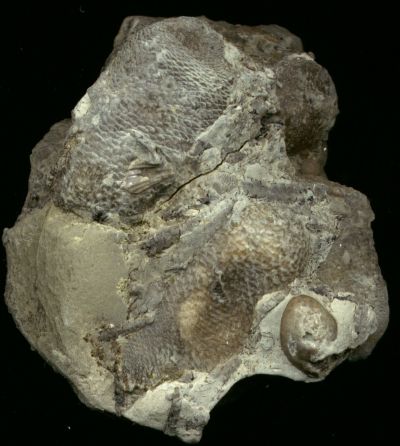
Rock O72k6000
Specimens: O72k6001 & O72k6002
The rock above has five algae specimens on it. The one shown at top pops off the
rock so you can see the other side. The other side looks the same as the side
you see. This specimen is in the possession of Carl Brett, Univ of Cinti.
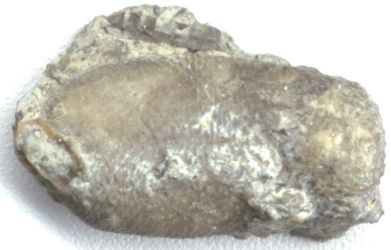
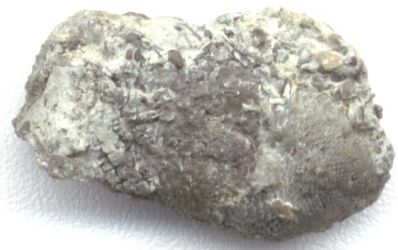
Specimen: O72k0001
The two pictures above show the two sides of a specimen relatively free from
matrix. This specimen is in the hands of Steve LoDuca, of Eastern Michigan
University.
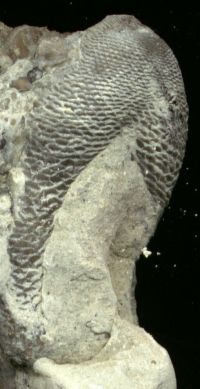
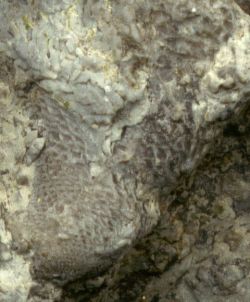
Specimens: O72k0002 and O72k0003 respectively (above)
The above two specimens are in the hands of Steve LoDuca, of Eastern Michigan
University.
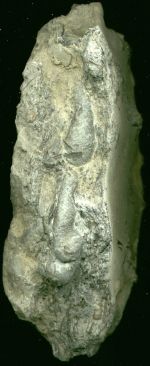
Rock: O72k3000
Specimens: O72k3001, 002, 003 & 009
Medium closeup (81k)
Very Closeup (339k)
The above specimen is a rock that is loaded with algae specimens along the edge
of the rock. This helps to show that the layer abundant in these fossils is so
thin, that the specimens are only exposed on the sides of the rock. This
specimen is in the hands of Steve LoDuca, of Eastern Michigan University.
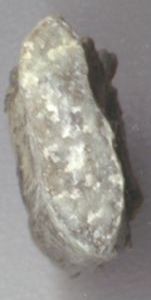

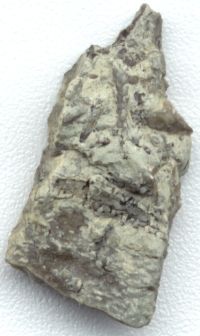
Specimen: O72k0004 (above 3 pictures, 3 sides)
The three pictures above show a half specimen. It is broken perpendicularly,
showing the thickness of the outer plating. It looks as though the plating is
mostly calcite crystals that are too big to resolve much detail of the rods that
should be found inside. Perhaps thin sections will reveal more detail. This
specimen is in my hands currently (Bill Heimbrock).
Click here to see a map of the rocks containing this alga.
NEW! =>
More Lepidolites specimens are now online!
Other References
http://www.uga.edu/~strata/cincy/fauna/algae/Lepidolites.html
"Lepidolites has lateral heads, like Cyclocrinites,
but is distinguished by its modified and overlapping lateral heads.
"Lepidolites dickhauti Ulrich, 1879
Occurrence: Southgate
Reference: Dalvé, 1948; Nitecki, 1970; Cross et al., 1996
Includes Lepidolites elongatus, Receptaculites dickhauti, Ischadites
dickhauti"
If you find any of these things while collecting, email me at
billheim@cinci.rr.com
. Thanks!
Bill Heimbrock
|